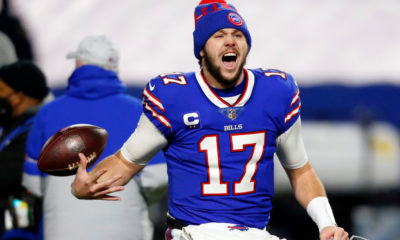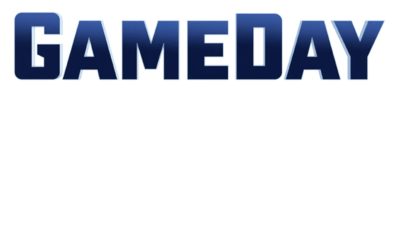The Baltimore Ravens have a problem.
Since their relocation/expansion/murky beginnings in 1996, the Ravens have worked tirelessly to become one of the more successful franchises in the NFL. They’ve built excellent facilities for both their fans and players. They sell out every home game with ease. They’ve produced one Hall-of-Fame inductee, with two more soon to follow. They routinely draft well. Their forays into free agency are generally successful if muted, as a large percentage of their signings are for depth purposes. And their front office is among the more respected and emulated in professional sports, let alone the NFL. All of this has culminated in two Super Bowl victories in two appearances, most recently in 2012.
So what’s the problem?
Baldly stated, the Ravens, despite their on-field successes, are woefully inept at drafting wide receivers.
Since 1996, the Ravens have drafted 23 wideouts, which is, league-wide, a rather conservative number. The team seems to have leaned on the middle and late rounds for them, as 16 of those 23 were taken in the fourth round or later. The second and third rounds produced four total; the first round three.
Of those 23 drafted (and “groomed”) wideouts, three remain on the roster. Three. And all three were taken in the last two drafts.
What’s going on here?
The Ravens have drafted Pro Bowl players at every position except quarterback and wideout (yes, they’ve had a couple of receivers go to the Pro Bowl, but they were acquired via free agency). Their draft focus has been (and most likely will remain) defense and offensive line, eschewing skill positions in favor of protection, which has largely been successful. This is a team that rarely attacked via downfield passing for their first decade or more of existence, clearly preferring the run, and it’s only been within the last few seasons that speed and breakaway ability among their wideouts became a premium for their offensive sets.
It’s well established that today’s NFL requires the ability to pass downfield, making the need for effective wideouts that much larger and more imperative. Most of the successful receivers in the league are first, second, or third round draft picks. Since the Ravens rarely draft wideouts within the first three rounds, well…we’re starting to see the beginnings of an explanation. The stylings of Clarence Moore, Javin Hunter and Justin Harper just weren’t enticing enough for the Ravens to retain them, but it’s admittedly rare that late-round wideouts for any team succeed in backup roles, let alone starting roles. Most teams draft receivers late for specialty purposes, like punt or kick returns. The Ravens have apparently sought starters there.
It’s even more gruesome in the early rounds. As mentioned above, throughout their existence, the Ravens have drafted seven wideouts in the first three rounds. Three were selected in the first round, and two each in the second and third. All but one are no longer with the Ravens, and none has spent more than five seasons with them, as they were either cut due to poor performance, or they departed in free agency. Erstwhile Ravens Torrey Smith and Mark Clayton fall into the latter category, and it should be noted that they are the only wideouts to leave in this fashion.
The cuts are understandable; after all, why saddle a roster with under-performing talent that may or may not ultimately succeed? The Ravens have drafted such luminaries as Patrick Johnson (“He’s really fast!”), Devard Darling (“Great Length!”), and Yamon Figurs (“Well, at least he can return kicks”) in the second and third rounds, where starters are often unearthed. The aforementioned Torrey Smith remains the only wideout the Ravens have drafted to constitute a tangible, multi-purpose threat on the field, and Smith was a second round pick.
The first round has been, to be kind, unremarkable. As stated above, the Ravens have drafted three wideouts there; Travis Taylor (2000), Mark Clayton (2005), and most recently, Breshad Perriman (2015). Taylor, despite ideal size and speed, lasted four seasons in Baltimore, never managing more than 61 catches in a single season before his NFL swan song in 2008. Clayton produced five forgettable Ravens seasons before signing a new deal with the St. Louis Rams in 2010. Injuries forced his retirement in 2013.
Enter Perriman.
The line of thinking behind the Perriman selection is obvious, as the Ravens were looking to replace the departed Smith without indulging in a lackluster free agent pool of wideouts. Smith’s forte was and is his speed and ability to separate from defenders downfield, and while his hands were never considered his strongest attribute, he managed to retain a solid amount of the balls thrown his way and rarely endured drops or turnovers. To the casual observer, Perriman is capable of reproducing Smith’s efforts, as he’s bigger, stronger, and certainly speedier, having posted one of the fastest 40-yard dash times among 2015’s draftees. His hands are considered marginal, but Smith improved; the general conclusion was that, with proper instruction and repetition, Perriman would too.
Conclusions be damned, as Perriman has yet to take the field beyond the first day of training camp. While his mysterious injury has been categorized as “not serious”, it’s apparently been painful enough to keep him sidelined. There is no timetable for Perriman’s return; all the more puzzling, since no clear diagnosis of his injury has been given, and it’s becoming obvious that incumbent wideouts Marlon Brown and Kamar Aiken are in a far better position to start the season than Perriman is. Injuries happen, particularly in training camp, and it’s a stretch to label him a bust before he’s ever lined up for a meaningful snap (or a middling preseason snap, for that matter), but given their history, the Ravens are somewhat nervous about Perriman and his future. Can’t say I blame them.
To spout a cliché, “time will tell”. Obviously, no one writes off a first-round talent in his first training camp, so the onus is on Perriman to improve and demonstrate that he’s worthy of his draft position. He has time to do so, but until (unless?) he does, skeptics and otherwise nervous fans will wonder if this franchise will ever get it right. Other teams draft wideouts all the time. Other teams have success with those wideouts. Why not Baltimore? Why not now?
Because they have a problem.
And it’s dangerously close to becoming chronic.


















Facebook
Twitter
RSS